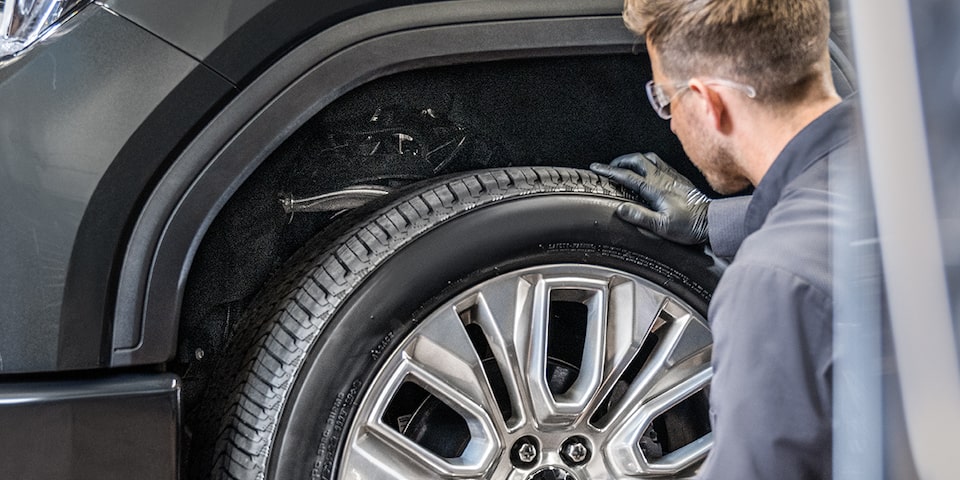Tire Swap

Having the right tires for seasonal driving, and swapping them for the appropriate weather, helps extend their lifespan and ensures your vehicle is equipped to handle a variety of road conditions.
Your Certified Service experts are trained to understand and recommend the right tires for your vehicle and your particular driving needs – empowering you to make an informed decision. Conveniently view availabilities at local Chevrolet, Buick, GMC and Cadillac dealers and schedule your service below.
Check out our other offers
-
Storing Tires
-
Tire Protection Plan
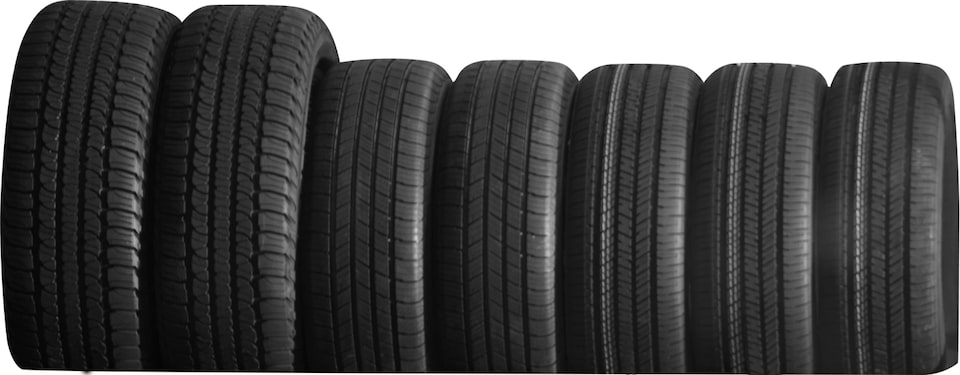
At Certified Service, we like to make things more convenient and efficient for you. That’s why many of our dealers offer storage solutions for your off season tires. Whether all season or winter tire swap, you won’t have to worry about finding extra space or transporting your tires back and forth – everything will be in one place

The Chevrolet Buick GMC Cadillac Tire Protection Plan is the only tire road hazard plan designed specifically for buyers of GM vehicles. The Plan provides coverage for certain tire and wheel damage caused by road hazards as well as emergency flat tire assistance.
Storing Tires

At Certified Service, we like to make things more convenient and efficient for you. That’s why many of our dealers offer storage solutions for your off season tires. Whether all season or winter tire swap, you won’t have to worry about finding extra space or transporting your tires back and forth – everything will be in one place
Tire Protection Plan

The Chevrolet Buick GMC Cadillac Tire Protection Plan is the only tire road hazard plan designed specifically for buyers of GM vehicles. The Plan provides coverage for certain tire and wheel damage caused by road hazards as well as emergency flat tire assistance.
ANCHOR HEADLINE PLACEHOLDER
Tire Facts
How To Check Your Tire Pressure
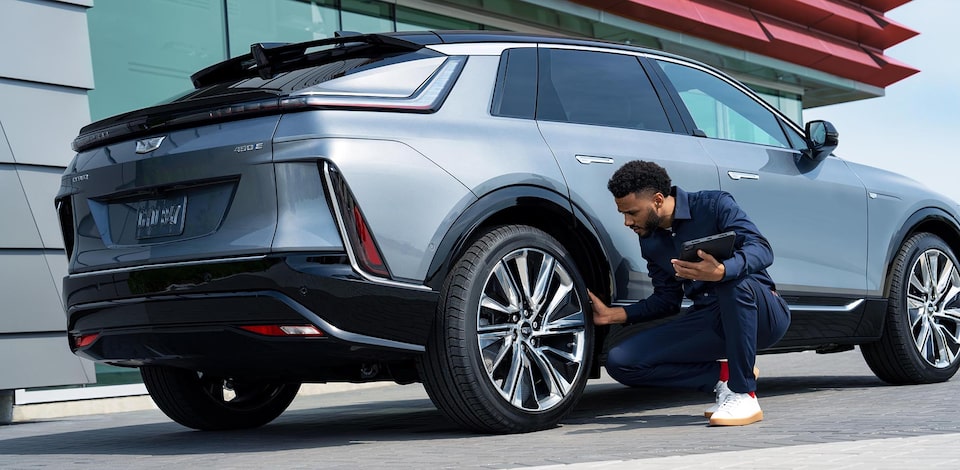
Check your tires when they are cold (i.e. before you drive off for the day) at least once a month with a quality tire pressure gauge or the Tire Pressure Monitoring System (TPMS) if your vehicle is equipped. You can find the recommended cold tire pressure for your vehicle on the Tire Information Label inside of your vehicle’s door frame and refer to your Owner’s Manual for details on how to access the TPMS (if equipped). The TPMS is also designed to warn the driver with a series of visible and audible alerts when a hazardous low-tire-pressure condition exists.
What Happens When A Tire Is Underinflated/Overinflated
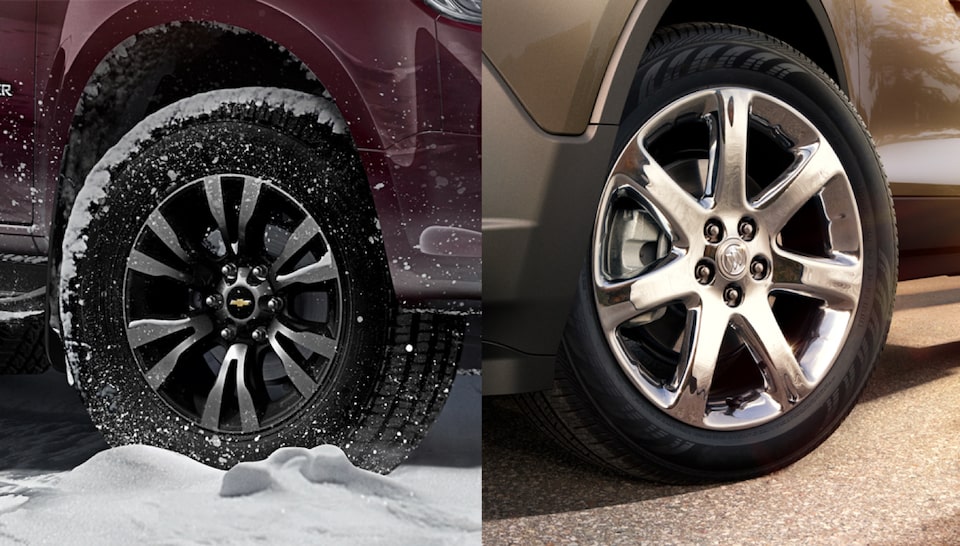
For all of Canada, fall and early winter are especially important times for checking tire pressure. A good rule of thumb: with every 5 degrees Celsius of temperature change, tire pressure changes about 1 psi - higher as temperatures rise, lower as they fall.

What happens if a tire is underinflated?
- Premature or irregular wear
- Poor handling
- Reduced fuel economy
- Overheating, which could lead to a blowout

What happens if a tire is overinflated?
- Unusual wear
- Poor handling
- Rough ride
- Greater risk of damage from road hazards
What Tire Wear Looks Like
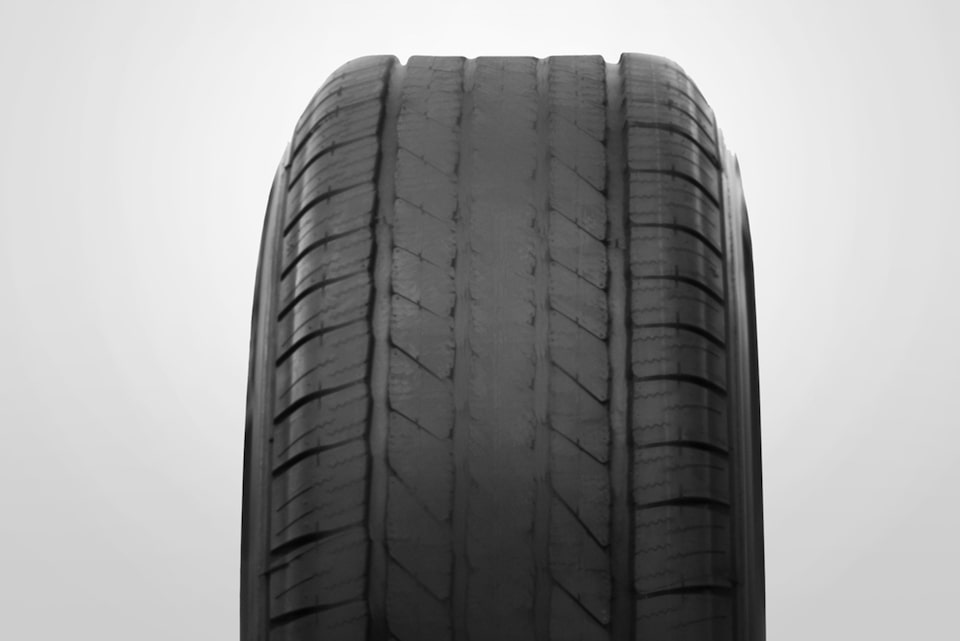
Tire replacement is absolutely needed when the tread wear indicators appear or a tread depth indicator shows less than 2/32 of tread left. A tire's built-in tread wear indicators look like narrow strips of smooth rubber across the tread and become visible as the tire surface wears. Different causes such as wheel alignment and overinflated/underinflated tires are reasons for different tire wear patterns. Routinely checking tire pressure and regular tire rotations are recommended to help ensure that your tires wear evenly.
How To Check For Tire Wear
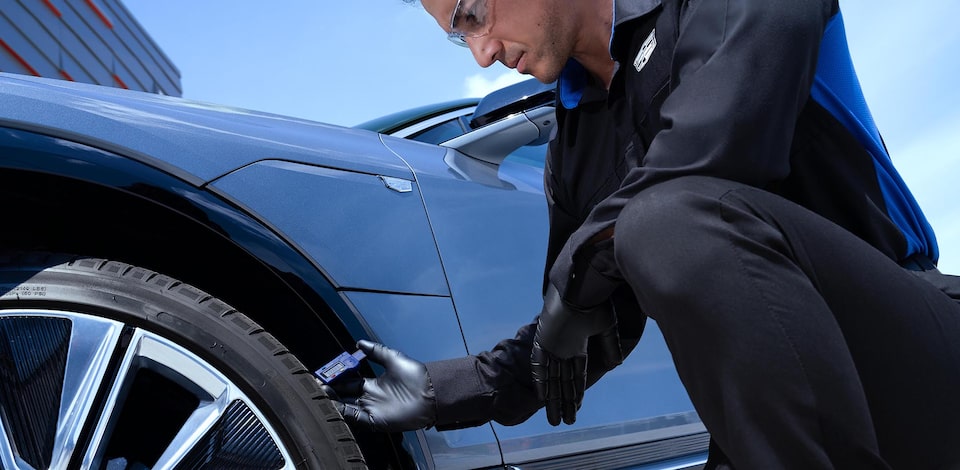
The Quarter Test
The easiest way to check wear on your tire is with a quarter. Place a quarter in the tire tread with the caribou nose down and facing you. If you can see the tip of Caribou’s nose, the treads are worn and tire replacement is needed.
Digital And Mechanical Tools
A quick and easy way to check for tire wear is with a digital or mechanical tread depth gauge. You’ll know it’s time for new tires when your depth gauge tells you that you’ve reached a depth of 1.5 mm or 2/32 inch.
When To Replace Your Tires
Tread wear indicators appear when the tires only have 2/32 inch or less of tread remaining. Rubber in tires ages over time. It’s recommended to replace your tires, even your spare, after 6 years regardless of the tread. Multiple factors including temperature, loading conditions, and inflation pressure maintenance affect how fast tires age.
Other warning signs that your vehicle will need tire replacement:
- You can see three or more tread wear indicators around the tire
- The tire cord or fabric is showing through the rubber
- The tire tread or sidewall is cracked, cut, or snagged deep enough to show cord or fabric
- The tire has a bulge or split
- The tire has a puncture, cut, or other damage that can't be repaired correctly
When To Rotate Your Tires
Tire rotations can extend the life of your tires and improve their performance. Tires should be rotated every 8,000-12,000 kilometres or when you swap your tires, to achieve a uniform wear for all tires.
Certified Service experts are ready at your local Chevrolet, Buick, GMC and Cadillac dealer to help find the right tire rotation technique and replacement wheel/rim for your vehicle.
How To Check Your Tire Pressure

Check your tires when they are cold (i.e. before you drive off for the day) at least once a month with a quality tire pressure gauge or the Tire Pressure Monitoring System (TPMS) if your vehicle is equipped. You can find the recommended cold tire pressure for your vehicle on the Tire Information Label inside of your vehicle’s door frame and refer to your Owner’s Manual for details on how to access the TPMS (if equipped). The TPMS is also designed to warn the driver with a series of visible and audible alerts when a hazardous low-tire-pressure condition exists.
What Happens When A Tire Is Underinflated/Overinflated

For all of Canada, fall and early winter are especially important times for checking tire pressure. A good rule of thumb: with every 5 degrees Celsius of temperature change, tire pressure changes about 1 psi - higher as temperatures rise, lower as they fall.

What happens if a tire is underinflated?
- Premature or irregular wear
- Poor handling
- Reduced fuel economy
- Overheating, which could lead to a blowout

What happens if a tire is overinflated?
- Unusual wear
- Poor handling
- Rough ride
- Greater risk of damage from road hazards
What Tire Wear Looks Like

Tire replacement is absolutely needed when the tread wear indicators appear or a tread depth indicator shows less than 2/32 of tread left. A tire's built-in tread wear indicators look like narrow strips of smooth rubber across the tread and become visible as the tire surface wears. Different causes such as wheel alignment and overinflated/underinflated tires are reasons for different tire wear patterns. Routinely checking tire pressure and regular tire rotations are recommended to help ensure that your tires wear evenly.
How To Check For Tire Wear

The Quarter Test
The easiest way to check wear on your tire is with a quarter. Place a quarter in the tire tread with the caribou nose down and facing you. If you can see the tip of Caribou’s nose, the treads are worn and tire replacement is needed.
Digital And Mechanical Tools
A quick and easy way to check for tire wear is with a digital or mechanical tread depth gauge. You’ll know it’s time for new tires when your depth gauge tells you that you’ve reached a depth of 1.5 mm or 2/32 inch.
When To Replace Your Tires
Tread wear indicators appear when the tires only have 2/32 inch or less of tread remaining. Rubber in tires ages over time. It’s recommended to replace your tires, even your spare, after 6 years regardless of the tread. Multiple factors including temperature, loading conditions, and inflation pressure maintenance affect how fast tires age.
Other warning signs that your vehicle will need tire replacement:
- You can see three or more tread wear indicators around the tire
- The tire cord or fabric is showing through the rubber
- The tire tread or sidewall is cracked, cut, or snagged deep enough to show cord or fabric
- The tire has a bulge or split
- The tire has a puncture, cut, or other damage that can't be repaired correctly
When To Rotate Your Tires
Tire rotations can extend the life of your tires and improve their performance. Tires should be rotated every 8,000-12,000 kilometres or when you swap your tires, to achieve a uniform wear for all tires.
Certified Service experts are ready at your local Chevrolet, Buick, GMC and Cadillac dealer to help find the right tire rotation technique and replacement wheel/rim for your vehicle.
Tire Offers
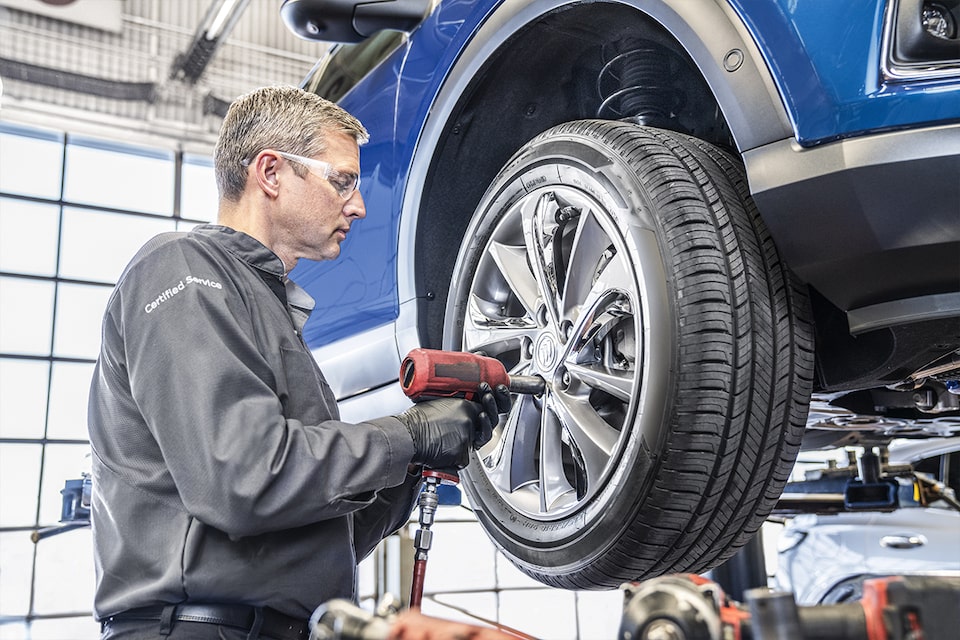
Remove and install Winter Tires and Summer Tires for seasonal driving requirements.
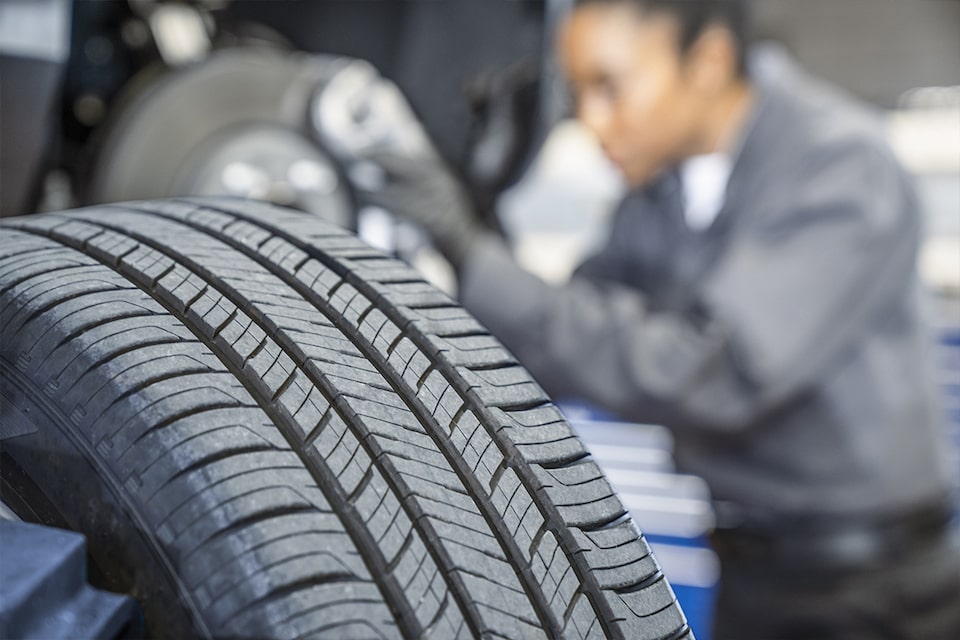
Remove and install Winter Tires and Summer Tires for seasonal driving requirements.

Remove and install Winter Tires and Summer Tires for seasonal driving requirements.

Remove and install Winter Tires and Summer Tires for seasonal driving requirements.


